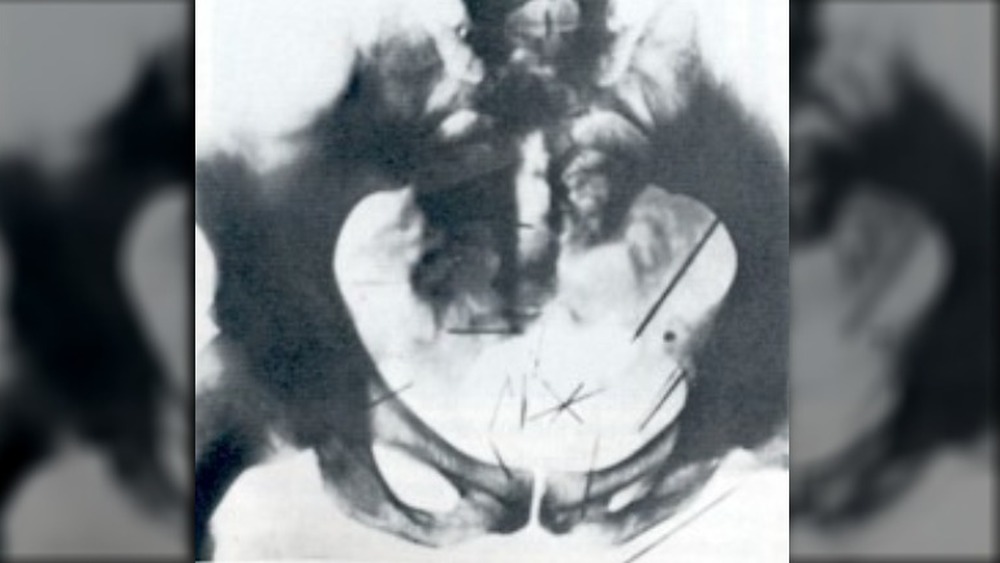How The Grey Man Was Finally Caught
It was a perfect summer afternoon in June 1928, as Frank Howard, an affluent farmer from Long Island, walked down the street holding hands with 10-year-old Grace Budd. The Budd family was happy to see Grace, a sickly and shy little girl, on her way to a birthday party of Howard's niece. The family lived in a tenement building in Manhattan's Meatpacking District and struggled to make ends meet. But they had a stroke of luck recently with Frank Howard entering their lives, and offering their 17-year-old son, Edward, a decent job with generous pay on his farm in Farmingdale, with room and board included, according to Crime Museum. Between a job for her son (and one less mouth to feed), as well as a grandfatherly figure taking Grace to his family's gathering, Mrs. Budd started to feel a sense of relief.
But that man was not Frank Howard, and Mrs. Budd would never see her daughter again. Only the next morning, when Mr. and Mrs. Budd rushed to the police department, did they realize that their nightmare had just begun. There was no accident with an older man and a little girl, as they had hoped. In fact, there was no record of a Frank Howard from Farmingdale at all. As the search widened, the story of "The Grey Man" became national news, and each case with similar characteristics created a new sense of hope, only to be later dashed time and time again.
Finally, a break in the case
In June 1934, after six years of waning interest in the case, a relative of Grace Budd contacted police after seeing a photo in a newspaper of two sailors enjoying their leave with two attractive young women. The relative was convinced one of the two women was Grace, but it was a mistaken identity, the New York Daily News recalled. However, all was not lost. The tabloids revived the story of Grace Budd's abduction, and the police were hopeful somebody would come forward with new information. Somebody did (sort of). The Budd family started receiving tormenting letters from a man who claimed to be their daughter's killer. In grotesque detail, the letters outlined how he had killed, butchered, and cooked the child before eating her remains.
The letter [via Rare], with mistakes and all, read, in part: "I took her to an empty house in Westchester I had already picked out. When we got there, I told her to remain outside. . . . When all was ready I went to the window and called her. Then I hid in a closet until she was in the room. When she saw me all naked she began to cry and tried to run down stairs....I choked her to death then cut her in small pieces so I could take my meat to my rooms, cook and eat it. How sweet and tender her little a** was roasted in the oven."
Tracking down the Grey Man
The letter was legit. Investigators matched the letter's handwriting to the script on the original communication with the family. But they still had no idea who the true identity of "The Grey Man" was. Upon closer evaluation, there was an additional clue — a printed logo on the envelopes blacked out with ink. However, the police were able to determine the stationary was from a Manhattan chauffeurs' association, as All That's Interesting detailed. Investigators visited the headquarters, which led to a member who was known to use the stationary for his personal use. That man said he had left a stack of it in his old room at a flophouse he recently vacated. The police then staked out the building, patiently waiting for the man who recently rented the same room to show up.
It took several days, but the stakeout eventually yielded results. The man's name was Albert Fish, and he confessed to the June 3, 1928, kidnapping and murder of Grace Budd. Police quickly learned many things about Albert Fish. Nearly all of his family suffered severe mental illness, and he was abandoned in a Washington, D.C., orphanage, where he (and many of the other children) were severely abused physically, psychologically, and sexually. "I was there 'til I was nearly nine, and that's where I got started wrong," Fish later recalled, according to ThoughtCo. "We were unmercifully whipped. I saw boys doing many things they should not have done."
From tortured orphan to sadomasochist
From those experiences as a child, Albert Fish became obsessed with sadomasochism, including an obsession with sexual self-mutilation. He regularly flogged himself with a nail-studded paddle, ate his own feces, burned himself with hot irons, and he would embed sewing needles into his pelvis area. Nearly 30 needles were found in his groin area (pictured above), after he informed a psychiatrist of what he had done, according to History.com.
At the time of his capture, Fish was a slender, harmless-looking 65-year-old man. He hardly appeared to be the serial killer type who carried out such grizzly acts. Regardless, he detailed how he intended to molest and murder the son, Edward, but instead took the trusting little girl to an abandoned mansion in Westchester. There, he strangled and dismembered her body before burying parts of her around the grounds. Other bodies were also found at the mansion. Officials suspected he killed as many as 10 other children, but they could only prove three. In a 10-day trial, Fish claimed insanity, saying that God had told him to kill children. The jury believed him, but ultimately determined he should be executed anyway. On January 16, 1936, Fish was executed by electric chair at Sing Sing prison. As he was led to his death, he used the moment to assert one final perversity, according to History.com, telling the guards of his execution, "It will be the supreme thrill, the only one I haven't tried."



